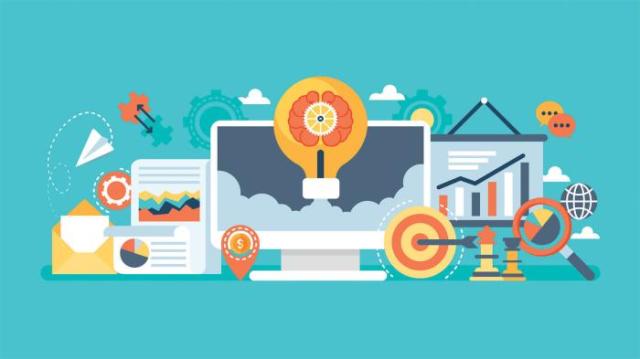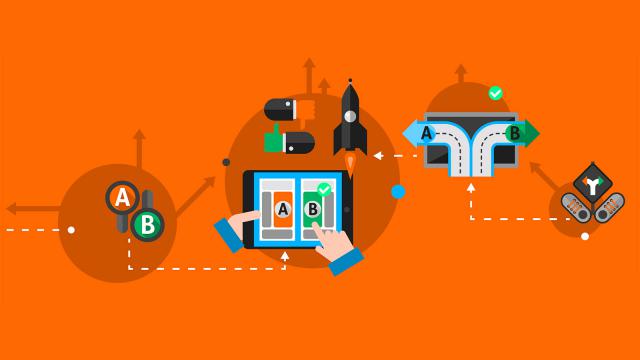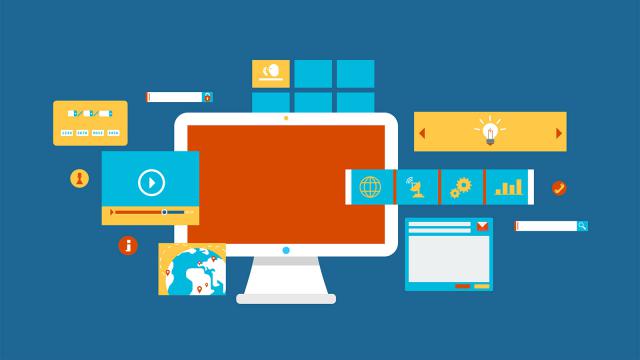As UX designers, we are often asked the question: what steps does the UX design process consist of? How many steps are there? What are the tasks of the individual steps and what is their output for the user experience? I will try to answer these questions in the following article.
Overview of the UX process
Basically, every UX process consists of the following 5 steps:
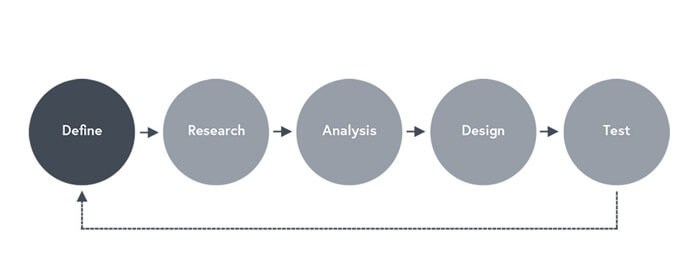
Tartalomjegyzék
1. Defining the product
One of the most important phases of UX design happens before the UX process begins. Before we create a product, we need to understand the context of its existence. The product definition, as the first step, has a fundamental impact on the product's success. In this phase, the UX designers work together with the client to define the product.
This section usually consists of the following parts:
- Stakeholder interviews: listening to the client in order to gather information about the main objectives. Determining the goals and values of the product is extremely important from the point of view of an effective workflow.
- Creating value propositions: the value proposition presents the key elements of the product: what it is, for whom it is made, what its purpose is, what problem it will solve, where and when it will be used. Value propositions help the UX team and the client reach a consensus on the main features of the product.
- Concept sketching: creating an early sketch (mockup) of the product.
- Kick-off meeting: at the first meeting, the project participants (owners, designers, copywriters, UX specialists, developers, project managers, online marketers) gather and define the main expectations for the client and the UX team. The meeting includes defining the goals of the product, presenting the work methods and the UX process discussed in this article, and negotiating the client's expectations (KPIs). The kick-off meeting usually takes 2-3 hours depending on the size of the project.
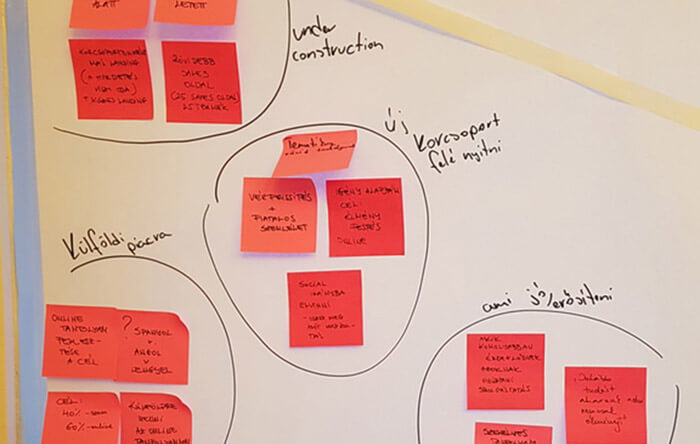
2. Research
After the basic idea of the product has been determined, the research (user and market research) begins, which is essential for good UX. Research carried out at the right time and with appropriate methods saves a lot of time and energy for later work processes.
The research phase is the part of the UX design process that can vary the most from project to project depending on the complexity of the product, timing and available resources.
The research phase consists of the following parts:
- User interviews: a high user experience starts with getting to know potential customers thoroughly. Customer interviews help you understand who the target audience is, what their needs, motivations and fears are.
- Competitor analysis: who are the potential competitors, what products do they have and what are their strengths and weaknesses. How to position your own product among these competitors. The following questions should be asked during the competitor analysis: Has anyone already solved this problem? Who and how many? How was it solved? Why is their product successful or not? What will be different in our solution?
- Google Analytics analysis: if visitor data for a digital product is available, useful information can be extracted from their analysis: arrival points, sources, main routes, busiest pages, funnels, searches. Hypotheses can be set up from these data, which must then be validated.
- Creating questionnaires: questionnaires are excellent for recording the data of real users. Generally, by sending out an online form to a target audience, UX designers can ask open-ended questions such as Where was the product while you were using it? What tasks would you like to complete? Is there anything that disappointed you while using the product?
- Cardsorting: a tool used for both research and testing. The elements (e.g. menu items) are written on cards, then the subject must sort them into groups, and finally give the group a name. The method allows us to create logical groupings and category names from the user's point of view.
- Treetest or navigation: the elements (menu items) are arranged in a tree hierarchy. We ask the subject questions and then examine where he would look.
- Heatmap tests: we record the user's behavior and analyze it afterwards. Parts: scrollmap, eyetracking, click map, heat map.
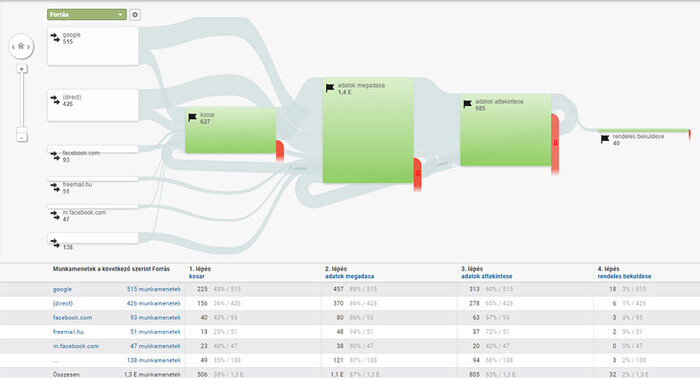
3. Analysis
The purpose of the analysis phase is to gain insight from the data collected in the research phase and to confirm the assumptions made in the first two phases. This is where UX designers begin to understand and categorize the information they have collected so far about what users want, what they think, what their needs are and why they do it all.
This section usually consists of the following parts:
- Affinity diagram: helps you unpack information from your research, find connections and hidden anomalies. Its advantage is that it externalizes the data and provides a common thinking space for the team.
- Creating user personas: user personas are fictitious characters that represent the main groups of users of the digital product. The purpose of defining persozones is to get a real picture of the main characteristics of the potential target group. What age they are, where they live, what interests they have, what education they have, what devices they use, what internal characteristics they have.
- Empathy map: helps to understand users. What is his purpose, what does he see, what does he say, what does he do, what does he hear, what does he think, what does he feel. It presents the user in these 7 divisions and helps to understand his feelings.
- Defining the customer journey: the customer journey helps to understand the interactions of a specific persona with the digital product. The customer journey presents the persona's journey in a visual form, that is, the process during which they come into contact with the digital product.
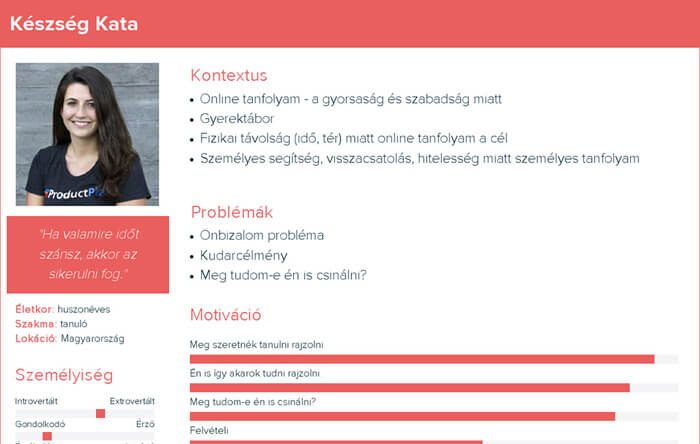
4. Design
Once the expectations of the target audience regarding the digital product have been recorded and we also know for what purpose and how it will be used, the UX designers start the design process. Ideally, the UX design process involves many participants, as each person involved in the project adds their own results and experiences.
The UX design phase usually consists of the following parts:
- Hand-drawn sketches: this is the easiest and fastest way to put our ideas and solutions into visual form before deciding which ones we will continue working with. Hand-crafted sketches are easy to share with project participants and refine them based on their feedback.
- Creation of wireframes: a wireframe is a black-and-white drawing made by hand or with a computer, which depicts the main elements of the product's appearance, their arrangement, and hierarchy. Its advantage is that it can be modified easily and quickly, so it is ideal for putting ideas into visual form and making changes.
Everyone must participate in the creation of wireframes, including designers, copywriters, UX specialists, developers, project managers and the client. This is the only way to ensure that everyone can add their own experience to the final result. - Prototyping (Prototypes): if wireframes are about structure, layout and hierarchy, then prototypes show interaction. A prototype is a simulation of how a product works, usually using clickable wireframes.
- Design specification: a design specification is a detailed document that records information about the product. During the preparation of the document, the designer describes in detail how the individual elements of the product look and function.
You can read about UX Design in detail in this article.
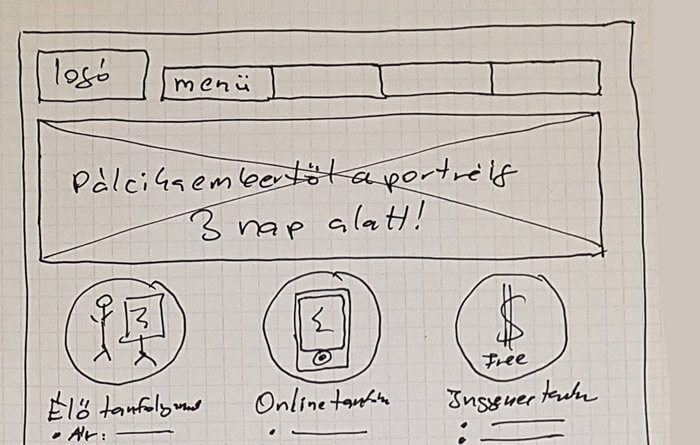
5. Test
The testing phase begins when the high-fidelity design is completed. The product is tested with the client and end users.
As with research, the steps the process consists of depend on the product:
- "Eat your own dogfood": after the design team has iterated the product until it is usable, it is tested within the team for the time being, which is a great and cheap validation technique.
- User testing: user testing means testing on real users. It has several forms, such as usability testing, focus group testing.
- Analysis of analytics (Data analysis): analysis of data provided by analytical tools, which show how users used the product, where they clicked, how much time they spent with it, what they searched for... etc. These analytical data help to recognize unexpected situations and reveal user behaviors that were not revealed by user tests.
- User feedback: analyzing user feedback, such as support requests and bug reports, can be useful for product refinement.
- A/B testing: method used to test minor design variations. Two different versions of a minor design change are running live at the same time, so that visitors sometimes see one version, sometimes the other. After evaluating the results, it becomes visible which version will be more effective.
UX design is not a linear process
The phases of the UX design process often have significant overlaps and usually consist of many circular steps. This means that the more information and experience the UX designer gathers about the problem to be solved, the users, and the project, the more often he returns to an earlier phase and tries out new ideas.
Summary
The UX design process is therefore a circular process consisting of multiple steps, many steps back, the aim of which is to gather as much information as possible about the users of the product, and then, after creative ideas, with the help of serial testing, create digital products that the users will love.


